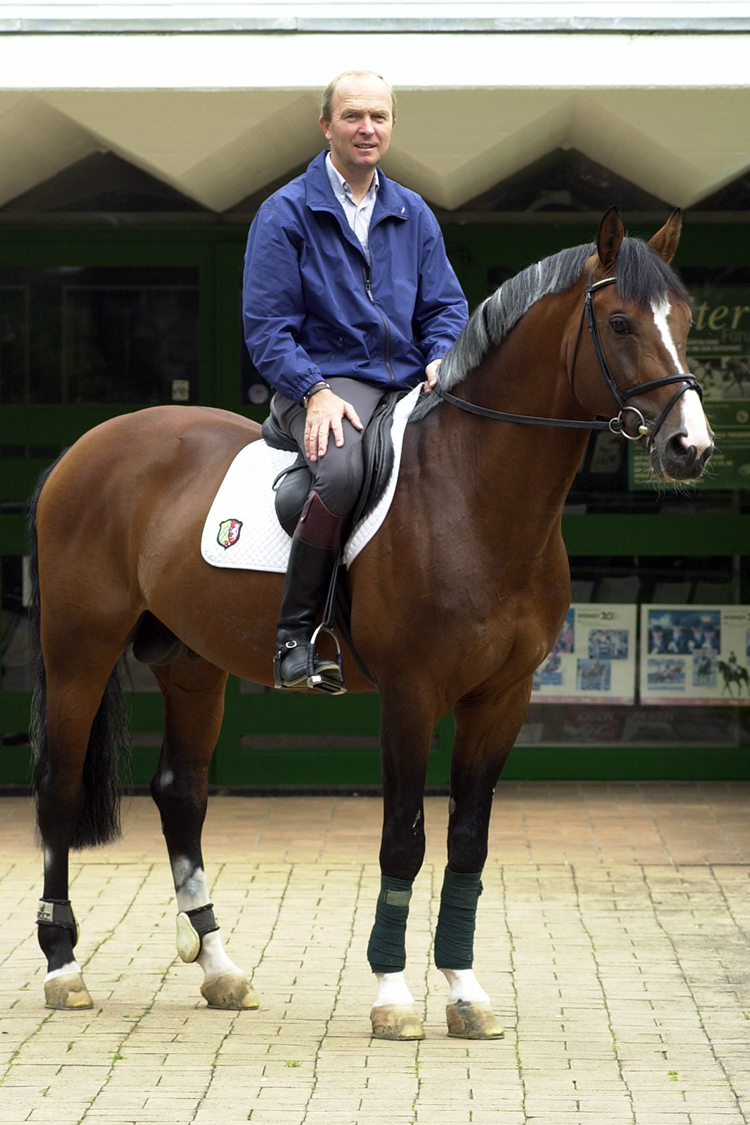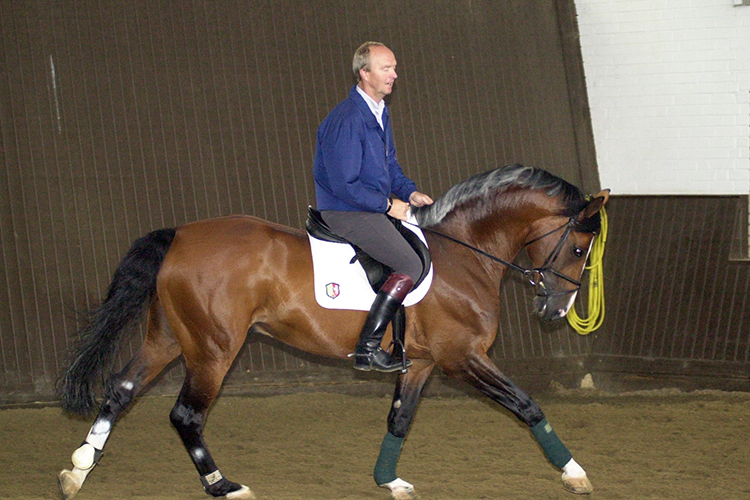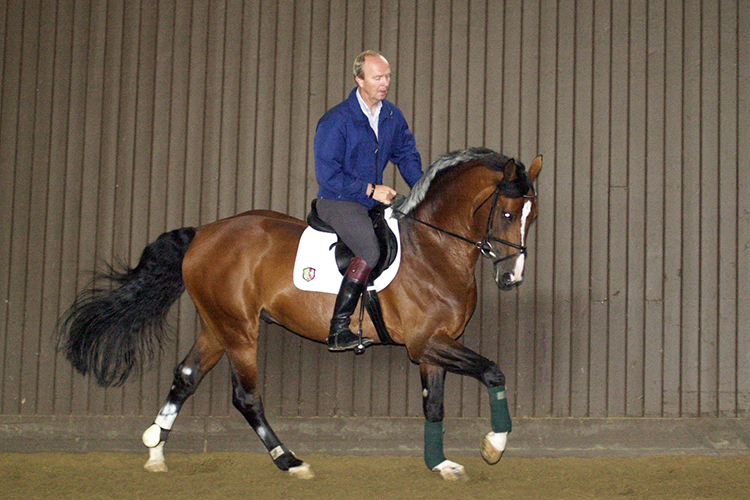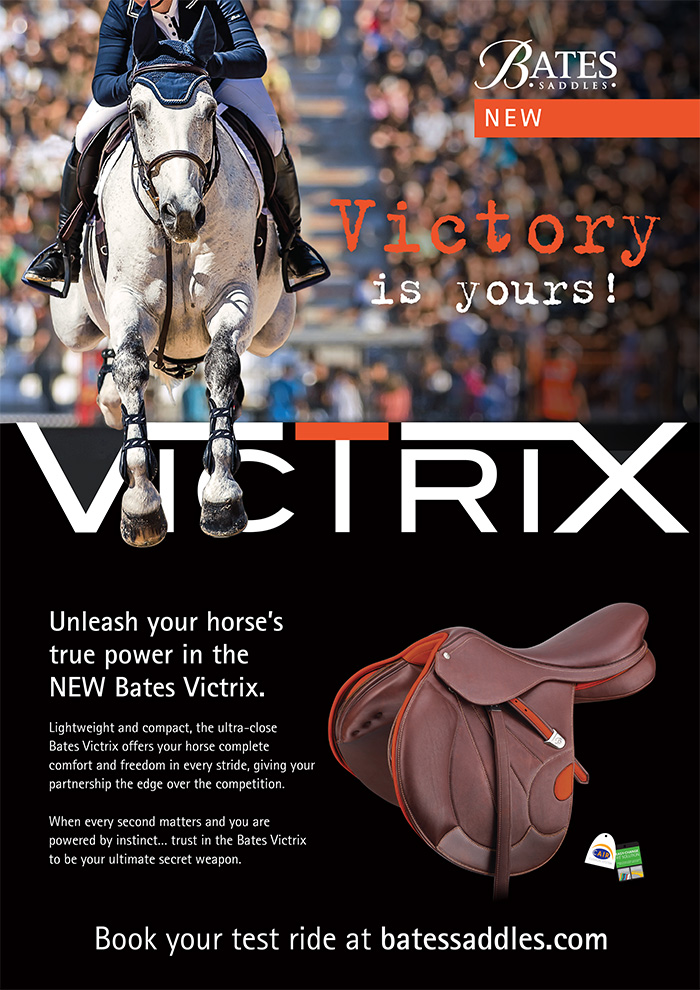
Story – Chris Hector
They call him ‘Kaiser’ for Heinrich-Wilhelm Johannsmann not only rides like a king but also shares the christian names of the last German Emperor. And if that Kaiser was born to rule, this Kaiser was born to ride – he is one of four brothers from a well-known Westfalien horsebreeding family, three of the brothers ride horses, one drives racing cars.
Kaiser has had an illustrious career over almost 25 years – a European Showjumping Vice-Champion at Rotterdam back in 1979 with Sarto, and seventh in the World Cup final in Baltimore the following year, again with Sarto.
In the intervening years, Heinrich-Wilhelm had a number of good horses, like Geronimo, Garlic and Lovely Dancer, but his career took one great leap forward with the appointment of Germany’s first woman breeding director to the Westfalien State Stud in Warendorf. Susanne Rimkus decreed that the state stallions should emerge from the breeding barn and take their place in the sport – and the man to ride them was Heinrich-Wilhelm Johannsmann.
The move was an immediate success, and very soon three of the Westfalien stallions – Prosario, Gralshüter and Potsdam were flying the flag of the Westfalien-Rheinland Studbook and winning new fans for Westfalia, and mares to further their breeding careers.
This year, Kaiser has won three Grand Prix with Gralshüter and one with Potsdam. When we met up with him he was working Gralshüter in the indoor school at the DOKR (German Olympic Training Centre) where Kaiser is employed coaching talented riders from all over Germany (even the world, since Australian triple gold medallist, Andrew Hoy has been known to slip into the hall for some of his advice…)
I am – as always – indebted to the world’s friendliest, most knowledgeable and most helpful press officer – Thomas Hartwig who works for the German FN which shares the same Warendorf address as the DOKR, for translating this little interview.
I asked if there were the same classical rules for riding jumping horses that we find with dressage horses. The answer was yes:
“We have the same classical rules for jumping as in dressage in training and education, and the most important point is that the education of the horse must be based on their age and their level of education and training. You can’t do the same work with a horse that has been training for one year as you can with a horse that has been training for three or four years.”
“It is very important for the development of jumping riding in Germany that we have a special competition based on style, based not only on jumping faults, but also how the horse goes. We see these special competitions at the Bundeschampionate in the classes for the young jumping horses and I believe that these classes have been the secret of Germany success in jumping over the past 20 years. We have had special classes for the young jumping horses since the late 70’s. At first everyone was not so happy about these classes, but today we see the great success of German showjumping and it depends on these classes for the young horses because every rider is forced to train in the right way.”
“Markus Beerbaum was recently in the United States taking a clinic, and he told me he built atypical German young horse jumping course and he asked the riders to warm up in the practice area then come in an ride this little course. Markus let them ride in their own way, but after they rode, then they analysed what happened. So it was better in the beginning not to try and tell them exactly what they have to do, let them jump, then later analyse and discuss, and then show them the right way.”
“This is how our judges work in these special competitions, they are analysing the horse and the rider. Then you can see the problems of the horse and the problems of the rider, then you can analyse and work on the best solution. In the late 70’s when we started these competitions, some people said ‘what is the point of these competitions, you will only die being beautiful?’ but it is not true, 20 years have shown that you can win with beauty.”
In dressage where there is a subjective judging system, there are always great disagreements about whether the judge has given the right mark or not, is it the same in these jumping competitions – is there the same controversies?
“We have less discussion in the jumping competitions for the young horses than in dressage because the aim is another competition, the special young horse competitions are for the really good young horses only one step to another aim. For ordinary horses, maybe the result in this competition is very important but for the really good horses is not so important because they have higher aims.”
“In the life of a horse we have special parts. Up until the age of six, then this is the part taken up with the young horse competitions to see if the horse has a talent for jumping, and from six to ten, is this horse able to jump high and wide fences? And then after ten the first aim is the health (soundness) of the horse. The young horses classes are only one step in the career of a really good jumping horse.”


Kaiser and one of the Westfalien stallion stars, Gralshüter – More below…
“And it is the same for the rider, they have parts in their career. If a young rider has too much success, say at the age of 18, then the danger is that he will get a little bit crazy, it is best if at the age of 25 the rider wins his first great competitions, so that the rider has the same development as the horse. From the age of 30 onwards, if you have the talent you need the good horses. It is very important to get enough experience as a rider, not just going over fences, experience in the management of the horse.”
With the dressage horses there is a lot of discussion about whether the horses that win the young horse classes – particularly the 4 year old classes – will ever go on and compete at the highest levels, is it the same with the young jumping horses?
“A lot of the young jumping horses, like the ones that come to the Bundeschampionate, they will find good riders and later you will find them in the biggest competitions – it is not the same problem that you have with the young dressage horse classes, or the classes for the 4 year olds. There is more consistency from the jumping classes. It is a 50:50 situation. Fifty percent of the top horses are coming from the young horse competitions, and fifty percent from other sources.”
Some commentators say that the modern courses have become so difficult, so big, so wide, that it takes a ‘freak’ to jump them…
“The difficulty with the courses is not the height or the width of the fences, the difficulties today are more technical difficulties. I don’t know if the great horses of previous times, like Halla or Meteor, would handle today’s courses, maybe yes, maybe no. The difference between a normal Grand Prix and a Championship is now so great, that at every Championship we will have some surprises. A Championship is more than one step up. There is a very wide difference between a normal World Cup competition, like Dortmund or Berlin, and the final of the World Cup, and so sometimes at these special competitions, there are many surprises. I believe that the horses that can win at World Cups, or European or World Championships, or at the Olympic Games, they can only do it once, or a maximum two times a year, because the difference from a normal Grand Prix is so great.”
Are we breeding much better horses for jumping than in former times?
“The general quality of the horses is much better than 30 or 40 years ago for the majority of the horses, totally different. But the special horses for the really great competitions are the same as they always were, they are accidents… You can’t plan for them – and to find the right rider for that horse is also an accident. That is what makes this sport so interesting, you can’t plan it. If you have a mare and you think you can breed her to this stallion and make a world champion for showjumping, you can believe it, but reality is different – maybe because you don’t find the right rider for this horse.”
Has the policy of competing the jumping stallions had a big effect on the breeding in the area of Westfalia?
“As the son of a breeder, I knew, and many other breeders knew, that there were some fantastic jumpers amongst the stallions at the State Stud in Warendorf, but they never had the chance to show how good they were. Ten, twenty years ago they were also very good stallions for jumping but they were never shown, never systematically developed for showjumping. I saw that the brothers of very good horses in the sport were standing at Warendorf but it was not so obvious then.”
Can you tell us a little bit about the three top stallions you are competing for the state stud?
“All three of the top stallions I am riding come from bloodlines that are so good, that it is no accident that they are so good: Prosario (Pinocchio/Pakt), Gralshüter (Gralsritter/Akzent II) and Potsdam (Polydor/Goldstern). In breeding and marketing of showjumping horses it is different from the breeding and marketing of dressage horses. In dressage it is easy to sell the horses only on their bloodlines, only on their movement, it is much easier to sell young dressage horses. For showjumping it needs more time, and sometimes the career of a showjumping stallion will start very slowly and only after many years will the breeders, riders and owners recognize that this is a stallion for jumping horses. Today it is too early to say if these three stallions will be great breeding horses. They have bred many foals in the past few years and they have the chance but most of their progeny are too young to say ‘yes, they will do it.’ Gralshüter and Potsdam are like their fathers, Gralsritter and Polydor, their fathers also bred many foals but in the beginning not everyone said ‘Yaahoo – this is the horse’, you need some years for the really good children of these stallions to come forward. It is funny to see that for these two sons it is the same as their fathers.”
Are the principles of training a jumping horse the same as the principles for training a dressage horse?
“The training scale of dressage is nearly the same as the training scale for jumping. I need the same important qualities – like rhythm and straightness. The problem is in the training of the riders. We have a training scale for the riders, but today we have the development of young riders who specialise only in one discipline – so the problems in the rider’s development will stay with them for a long time, they will take with them the mistakes in training, and you will see them 10, 15, 20 years later.”
“I am a total fan of the traditional German way of schooling a young horse, and a young rider, in both disciplines. The dressage rider and dressage horse should be able to train over small fences, and a jumping horse and jumping rider should know the basics of dressage.”
Here, Thomas explained that to get a license to ride in the German shows, you must pass a test, and a test in both disciplines:
“If you only want to be a showjumper, you still have to do a test in dressage, and vice versa. That is our classical system to train the young horse and young rider in both. It is very important for the jumping rider to be able to train the horse in dressage for the daily work of the horse. For showing in class A or higher, you must pass the test for the license in dressage, jumping and theory – you must take this test at your riding club. Only at the smallest tests for young riders can you compete without the license, in category C for riders from 10 to 13 years, but if you want to go to the real sport you must make this test.”

